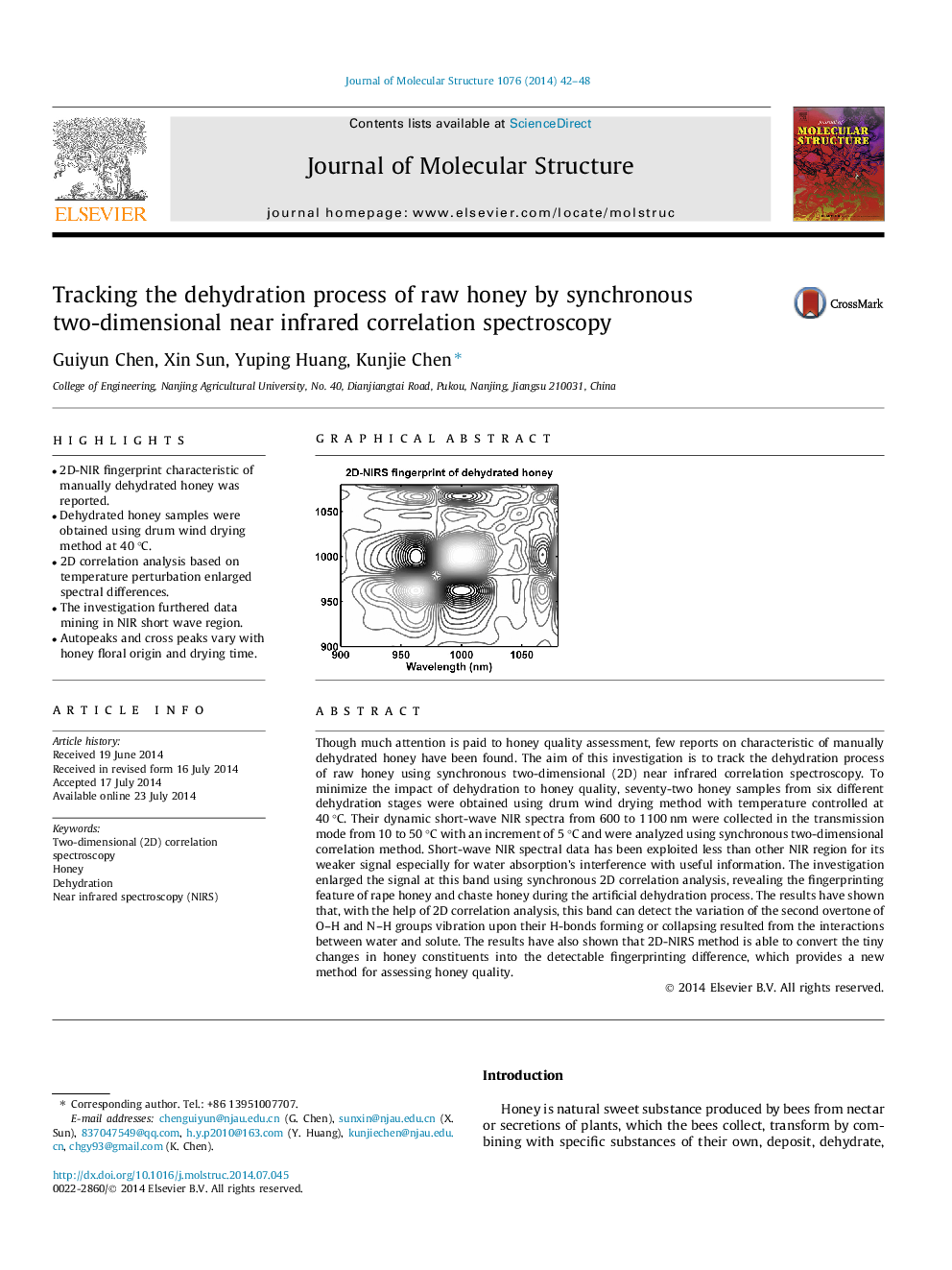| کد مقاله | کد نشریه | سال انتشار | مقاله انگلیسی | نسخه تمام متن |
|---|---|---|---|---|
| 1408424 | 1501741 | 2014 | 7 صفحه PDF | دانلود رایگان |
• 2D-NIR fingerprint characteristic of manually dehydrated honey was reported.
• Dehydrated honey samples were obtained using drum wind drying method at 40 °C.
• 2D correlation analysis based on temperature perturbation enlarged spectral differences.
• The investigation furthered data mining in NIR short wave region.
• Autopeaks and cross peaks vary with honey floral origin and drying time.
Though much attention is paid to honey quality assessment, few reports on characteristic of manually dehydrated honey have been found. The aim of this investigation is to track the dehydration process of raw honey using synchronous two-dimensional (2D) near infrared correlation spectroscopy. To minimize the impact of dehydration to honey quality, seventy-two honey samples from six different dehydration stages were obtained using drum wind drying method with temperature controlled at 40 °C. Their dynamic short-wave NIR spectra from 600 to 1100 nm were collected in the transmission mode from 10 to 50 °C with an increment of 5 °C and were analyzed using synchronous two-dimensional correlation method. Short-wave NIR spectral data has been exploited less than other NIR region for its weaker signal especially for water absorption’s interference with useful information. The investigation enlarged the signal at this band using synchronous 2D correlation analysis, revealing the fingerprinting feature of rape honey and chaste honey during the artificial dehydration process. The results have shown that, with the help of 2D correlation analysis, this band can detect the variation of the second overtone of O–H and N–H groups vibration upon their H-bonds forming or collapsing resulted from the interactions between water and solute. The results have also shown that 2D-NIRS method is able to convert the tiny changes in honey constituents into the detectable fingerprinting difference, which provides a new method for assessing honey quality.
Figure optionsDownload as PowerPoint slide
Journal: Journal of Molecular Structure - Volume 1076, 5 November 2014, Pages 42–48
